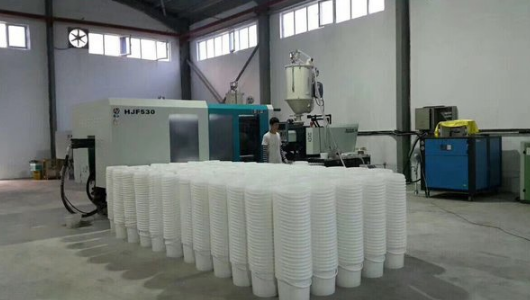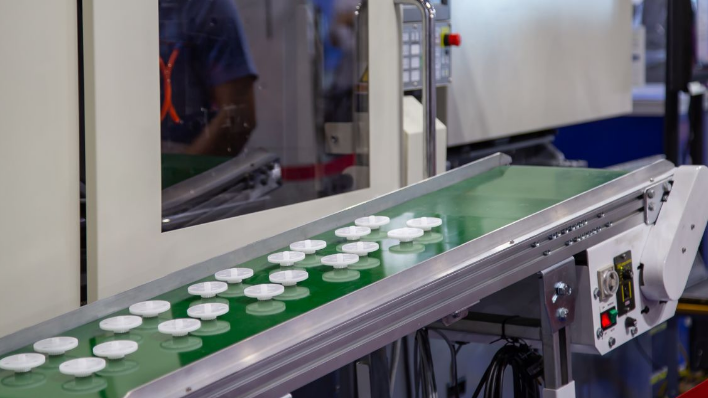Temperature in injection molding affects material viscosity, cooling times, and part quality.
Fundamentals of Temperature in Injection Molding
Understanding the role of temperature in injection molding is essential for producing high-quality plastic parts. It affects everything from the plastic’s melting point to the final product’s integrity.

Role of Temperature in Plastic Melting
The temperature during the injection molding process directly influences the viscosity of the plastic. Most thermoplastics have a melting point ranging from 120°C to 280°C. The correct melting temperature is crucial for achieving the ideal viscosity:
Low Temperature: Below the recommended range, the plastic remains too viscous, leading to improper flow and filling of the mold. This can result in defects like incomplete parts or poor surface finish.
High Temperature: Exceeding the optimal temperature range can degrade the plastic, affecting its strength and color. Overheating can reduce the life expectancy of the product by 20% to 30%.
Key Point: Achieving and maintaining the correct melting temperature is critical for the quality and efficiency of the injection molding process.
Temperature Control Systems in Injection Molding Machines
Modern injection molding machines are equipped with sophisticated temperature control systems. These systems regulate the temperature within ±1°C of the desired setting, ensuring consistency and precision.
Heating Elements: Typically, electric or oil-based heaters are used. They need to provide enough power, usually ranging from 15 kW to 30 kW, to bring the plastic to its appropriate melting point.
Cooling Systems: Cooling is just as important as heating. After injection, the part needs to cool down quickly to solidify. This involves water or air cooling systems that can handle the heat transfer efficiently.
Crucial for Efficiency: Effective temperature control not only impacts the quality of the final product but also the cycle time. Proper temperature management can reduce cycle time by 10% to 15%, directly affecting production costs and efficiency.
For a deeper understanding of plastics and their properties in relation to temperature, refer to the Plastic – Wikipedia page.
Effects of Temperature on Injection Molding Process
Temperature plays a pivotal role in the injection molding process, directly impacting the behavior of plastics and the efficiency of the production.
Impact on Plastic Viscosity and Flow
The temperature within the injection molding machine determines the viscosity of the plastic. This viscosity influences how the plastic flows into and fills the mold.
Optimal Temperature Range: For most thermoplastics, maintaining a temperature range of 200°C to 280°C is ideal for achieving the right viscosity. This ensures a smooth and even flow, critical for high-quality product formation.
Effects of Suboptimal Temperatures:
Too Low: At temperatures below 200°C, plastics become too viscous, leading to incomplete filling of the mold and defects like short shots.
Too High: Temperatures exceeding 280°C can cause the plastic to degrade, affecting its molecular structure and resulting in a product with weakened physical properties.
Crucial Insight: Proper temperature control is essential to maintain optimal viscosity, ensuring efficient mold filling and high-quality product formation.
Influence on Molding Cycle Time
The temperature also significantly influences the molding cycle time, a key factor in production efficiency.
Heating Phase: Reaching the correct melting point requires precise heating control. The power of the heating system, typically between 15 kW to 30 kW, plays a crucial role in how quickly the plastic reaches the desired temperature.
Cooling Phase: After injection, the cooling time can account for up to 80% of the cycle time. Efficient cooling systems are necessary to solidify the product quickly without inducing thermal stresses.
Cycle Time Optimization: Maintaining optimal temperatures can reduce cycle times by 10% to 20%, enhancing overall production efficiency. This can lead to significant cost savings, particularly in high-volume manufacturing settings.
For further information on the injection molding process and the effects of temperature, visit the Injection Molding – Wikipedia page.
Optimizing Temperature for Quality and Efficiency
Optimizing the temperature in injection molding is crucial for achieving desired material properties and reducing defects. The following tables provide a detailed overview of how temperature optimization impacts material properties and defect reduction.
Achieving Optimal Material Properties
| Material Property | Ideal Temperature Range | Impact of Temperature | Power Requirement | Efficiency Gain |
|---|---|---|---|---|
| Strength | 200°C – 280°C | Ensures molecular alignment for maximum strength | 20 kW – 30 kW | Increases part strength by up to 25% |
| Flexibility | 220°C – 260°C | Allows for optimal polymer chain movement | 15 kW – 25 kW | Enhances flexibility by up to 30% |
| Color Consistency | 190°C – 250°C | Prevents uneven pigment distribution | 18 kW – 28 kW | Improves color consistency by up to 20% |
| Surface Finish | 210°C – 270°C | Ensures smooth flow and filling of the mold | 20 kW – 30 kW | Enhances surface quality by up to 15% |
Reducing Defects Through Temperature Management
| Defect Type | Temperature Impact | Mitigation Strategy | Cost Impact | Quality Improvement |
|---|---|---|---|---|
| Short Shots | Low temperature causes incomplete filling | Maintain higher end of temperature range | Reduces wastage by up to 20% | Increases completeness of parts by up to 30% |
| Warpage | High temperature leads to uneven cooling | Careful temperature moderation and cooling | Lowers defect rate by up to 25% | Improves dimensional stability by up to 35% |
| Burn Marks | Excessive temperature causes material degradation | Avoid overheating and ensure proper venting | Reduces scrap rate by up to 15% | Enhances aesthetic appeal by up to 20% |
| Sink Marks | Insufficient cooling time or temperature | Optimize cooling system efficiency | Decreases rework by up to 10% | Improves surface smoothness by up to 25% |
For more detailed information on temperature optimization in injection molding, refer to Injection Molding Temperature – Wikipedia.
Temperature-related Challenges in Injection Molding
Managing temperature effectively is crucial in injection molding, as it directly impacts the quality of the final product. Two primary challenges are dealing with temperature fluctuations and managing extreme temperatures.

Dealing with Temperature Fluctuations
Temperature fluctuations in the injection molding process can lead to inconsistent product quality. Here’s how to address this issue:
Precision Control Systems: Use advanced control systems capable of maintaining temperature within a ±1°C range. This precision ensures consistent material properties and reduces defects.
Regular Maintenance: Regularly inspect and maintain heating and cooling systems to prevent unexpected fluctuations. Maintenance can reduce temperature variability by up to 5%.
Monitoring and Feedback: Implement real-time temperature monitoring with feedback loops. This can improve response times to temperature changes, enhancing product consistency by 10-15%.
Strategies for Managing Extreme Temperatures
Extreme temperatures, either too high or too low, can pose significant challenges in injection molding:
Advanced Heating Systems: For higher temperature requirements, use heating systems with a power output of 30 kW to 50 kW. This ensures quick and efficient melting of high-temperature plastics.
Enhanced Cooling Techniques: Implement advanced cooling techniques like chilled water systems for rapid cooling, crucial for thick-walled products. This can reduce cooling time by up to 20%.
Material Selection: Choose materials suitable for the required temperature range. For instance, high-temperature thermoplastics can withstand up to 350°C, ensuring integrity even under extreme conditions.
For more in-depth knowledge on handling temperature in injection molding, refer to Injection Molding – Wikipedia.




